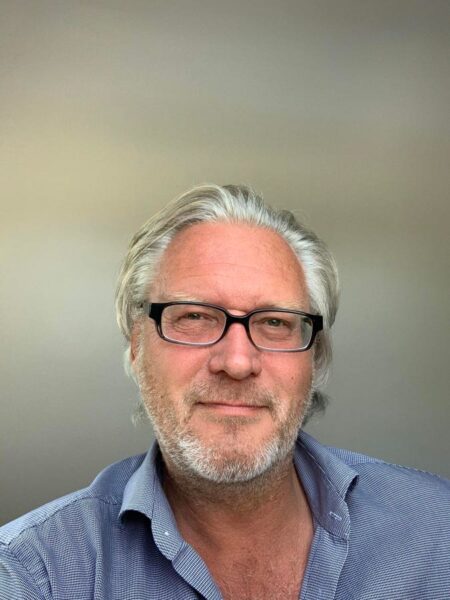Every year, thousands of life-saving clinical trials are delayed or derailed—not because of a lack of innovation, but because of outdated, fragmented data systems. A global study conducted by Oracle Health Sciences, found 57% of clinical researchers believed their clinical data issues resulted in trial delays. The top three problems were duplicate and inconsistent data, data quality and data integrity and traceability.
After spending 15 years treating patients with cancer and conducting research, Switzerland-based Dr. Nikola Cihoric grew increasingly frustrated with the slow systems bogging down clinical trials. On average, it takes more than three months just to set up and complete the data process for a trial. That’s in addition to the time it takes to conduct a trial.
Cihoric, a cancer researcher with over 40 peer-reviewed studies under his belt, knew he could devise a more efficient and integrated system. After educating himself in medical and clinical informatics, and practical development, Cihoric brought the agility of startups to a sector burdened by disconnected legacy systems.
“This wasn’t just a frustrating inefficiency—it was a barrier to better patient outcomes,” Cihoric said.
In 2020, Cihoric launched Wemedoo designed to streamline clinical workflows and make research data more accessible, structured and actionable. He also set up oopus, an all-in-one software solution for clinical trials that automates data processing and enhances collaboration between researchers and oomnia, a clinical information system tackling one of the biggest problems in medical research: fragmented, hard-to-analyze data. Oomnia simplifies data management across formats and systems, supporting diagnosis, digitized treatment paths and real-time data collection, analyses, and decision-making
The results are impressive. Take the last process of a clinical trial, called a database lock, where the data is essentially sealed and can no longer be altered. Normally, it takes 36 days from the last patient’s visit to database lock. With Cihoric’s system, database lock can be instant with the press of a button, or as much as a few days if additional processes are required. We sat down recently for an interview.
Amy Guttman: Beyond the obvious reasons for accelerating clinical trials, where else can we see the impact of slow, fragmented systems?
Dr. Nikola Cihoric: Clinical trials generate vast amounts of data which could be used to develop other treatments, beyond those directly attached to trial outcomes, but much of it is inaccessible, because it’s stored in incompatible formats and systems.
Guttman: How does your system solve the problem and how is it unique?
Cihoric: Oomnia is the first true all-in-one clinical trial software designed to unify and streamline every aspect of clinical research. Unlike traditional systems that rely on fragmented tools oomnia integrates all functionalities into one cohesive platform.
This unified approach eliminates inefficiencies caused by disconnected systems, reduces manual intervention, and ensures real-time data flow across all trial phases. Built for clinical research organizations, biotech companies and pharmaceutical organizations, oomnia scales intelligently to support trials of any size, therapeutic area or complexity, from small biotech studies to global Phase 3 mega-trials.
Guttman: How much have you been able to accelerate trials with your systems?
Cihoric: We did a trial for a drug device combination for treating an eye disease. It was complicated for a couple of reasons. Most people have two eyes, so we’re not only assessing one. And, it’s a combined trial not only for a drug but a drug administered through a special device so you have to pay attention to a lot of things. Because of the built–in flexibility of our system and its intuitive user journal system, we were able to organize the trial, end to end, which includes more than 5000 data points within nine weeks.
At the same time the sponsor started a clinical trial in the United States and for some reason, they decided to set up this trial with a major contract research organization. We provided a template and support to help them set up their own system and in nine months they couldn’t develop the clinical database. So, what we completed in nine weeks took them more than nine months. In the meantime, we successfully concluded, studied, and analyzed data and prepared a regulatory data set.
Guttman: What’s your business model?
Cihoric: We are providing SaaS and also providing services to effectively use the software customers already have and train users not only on our system but also how to more effectively organize their work.
Change management can be challenging, so we also offer services that include medical writing, statistical analysis and support protocol development. In the future, we would like to structure all of our knowledge and experience in a more usable form, and sell knowledge as a service.
Guttman: What kind of traction have you gained and what do you envision for the future?
Cihoric: We’ve already gained traction in the medical community and our team won the Best Scientific Study Award at the World Cancer Congress 2024 for our work on standardizing clinical data in radiotherapy.
There is a place for new technologies such as AI and large language models but you have to be careful. In the regulatory environment, it’s extremely important to make claims as they are, and to respect and fulfill all regulatory agencies on a global scale, requirements for validation, audit, trailing, reliability, reproducibility, and so on.
However, there is a huge space especially in the large language model domain where you can utilize this to facilitate data processing. Data extraction is the most promising. Our healthcare data in current systems are mostly saved as free text files, clinical discharge letters, clinical notes, etc. and this is the space where it can really nicely utilize large language models to support us. It could analyze and structure data and create new knowledge based on data that is complete and use it in a very smart way.
Read the full article here











